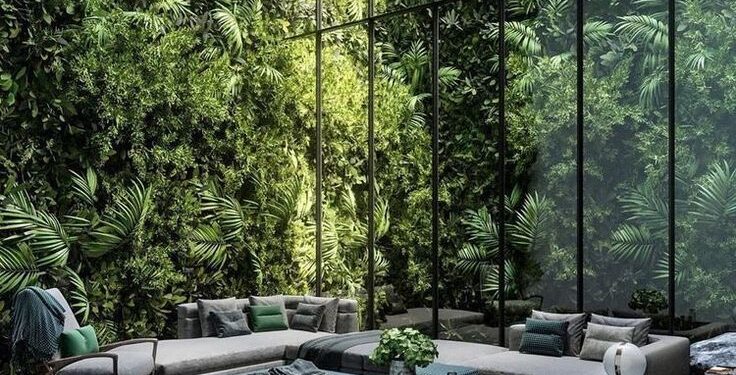Reconnecting with Nature
Our innate bond with nature, termed biophilia, reflects humanity’s evolutionary reliance on natural ecosystems for survival and psychological comfort. Modern architecture and interior design often sever that connection, leading to increased stress, decreased productivity, and diminished well-being. Biophilic design addresses this gap by embedding elements of the living world directly into the built environment, from residential homes to corporate offices.
A. Biophilia Defined: Coined by biologist Edward O. Wilson in 1984, biophilia describes the intrinsic human tendency to seek connections with nature and other life forms. B. Purpose of Biophilic Design: Goes beyond decoration—aiming to replicate nature’s patterns, processes, and systems within indoor spaces to evoke inherent restorative responses. C. Contemporary Relevance: Urbanization and screen-centric lifestyles have intensified the need for nature’s healing power in daily environments.
Core Principles of Biophilic Interiors

Biophilic design operates on three interconnected categories—direct nature experiences, indirect nature analogs, and spatial layouts that evoke natural settings.
A. Direct Nature Experiences: Incorporate live plants, natural materials, daylight, and moving water to engage multiple senses and support physiological health.
B. Indirect Nature Connections: Use imagery, colors, textures, and patterns inspired by nature—leaf motifs, wood grains, fractal geometries—to evoke familiarity even without live elements.
C. Spatial Configuration: Design interiors with prospect and refuge zones, variation in ceiling heights, and visual depth to mimic the exploration and safety dynamics of natural landscapes.
Each principle interlaces to produce environments where occupants feel relaxed, focused, and anchored to nature’s rhythms.
Health, Cognitive, and Emotional Benefits
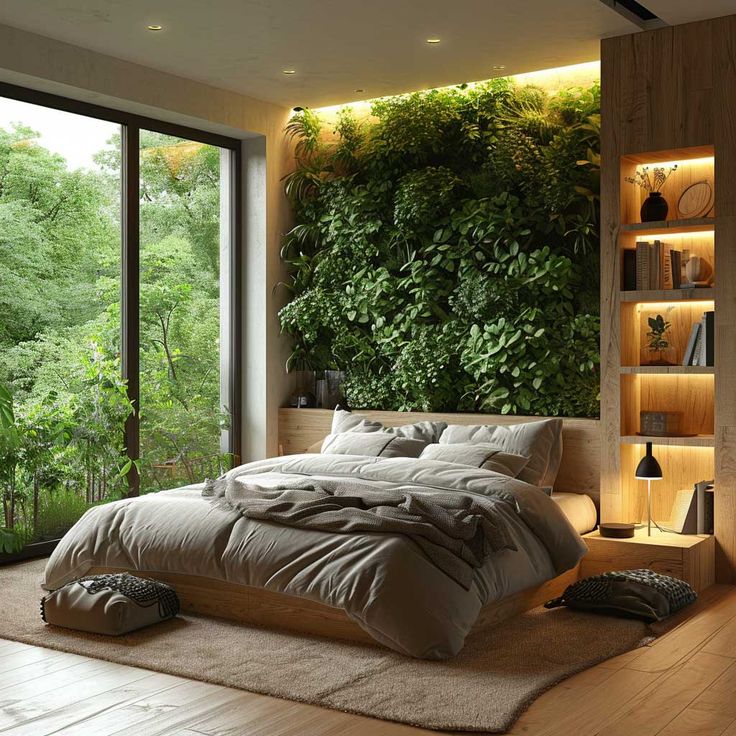
Research across environmental psychology and medicine quantifies biophilia’s impacts on individuals and organizations.
A. Physiological Well-Being: Greenery and natural air flow reduce stress hormones (cortisol), lower blood pressure, and support immune function.
B. Cognitive Enhancement: Access to daylight and green views correlates with improved attention, memory recall, and creative problem-solving.
C. Emotional Restoration: Water features and plant-rich settings foster tranquility and reduce mental fatigue.
D. Productivity and Engagement: Workplaces with biophilic elements report decreases in absenteeism and increases in employee satisfaction and output.
E. Healing Environments: Hospitals employing nature-integrated rooms observe shorter patient stays, reduced pain medication usage, and faster recovery rates.
These multifaceted benefits underline biophilic design’s value as an investment in health and performance.
Practical Strategies for Biophilic Design
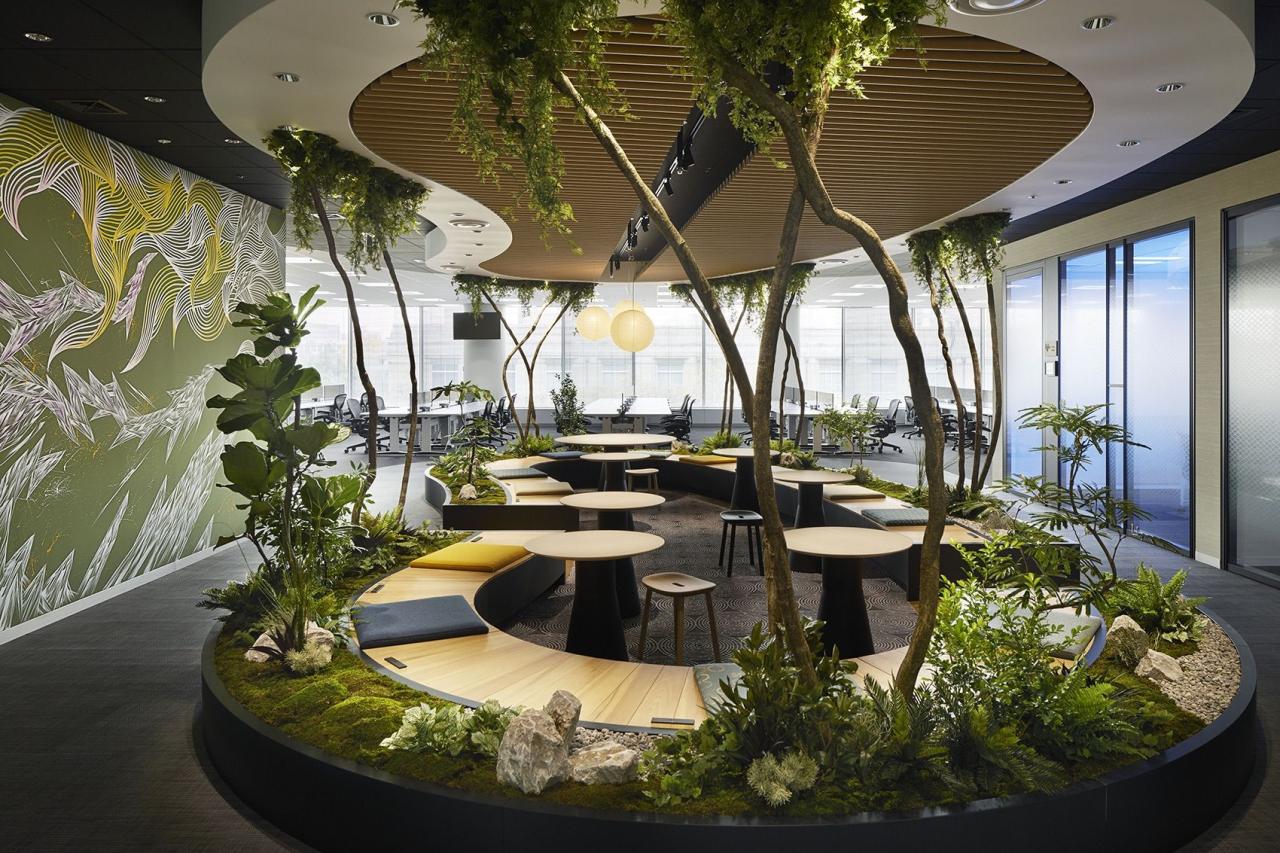
Implementing biophilic design involves a systematic approach spanning site planning to material detailing.
A. Maximize Natural Light: Orient windows, skylights, and clerestories to channel daylight deep into interiors, enhancing circadian wellness.
B. Integrate Live Plantings: Employ potted trees, vertical living walls, and planter bench systems—prioritizing native and low-maintenance species for resilience.
C. Incorporate Water Features: Install small fountains, reflecting pools, or aquascape installations to provide auditory and visual stimulation.
D. Use Natural Materials: Specify sustainably sourced woods, stone, bamboo, cork, and natural fibers for floors, ceilings, and furnishings.
E. Apply Biophilic Patterns: Incorporate fractal and biomorphic designs—leaf venation wallpaper, pebble-shaped tiles, and branch-inspired latticework.
F. Enhance Air Quality and Ventilation: Combine operable windows with mechanical systems augmented by plant-based biofilters for clean air.
Successful integration requires collaboration between architects, interior designers, horticulturalists, and facility managers to align aesthetics, functionality, and maintenance.
Material Selection and Sustainability

Choosing authentic, ecological materials is critical to preserving biophilia’s integrity and environmental ethics.
A. Certified Wood Products: FSC- or PEFC-certified lumber and reclaimed timber for structural elements, paneling, and millwork.
B. Local Stone and Aggregates: Marble, granite, or slate sourced regionally to reduce carbon footprint and connect interiors to local geology.
C. Renewable Textiles: Organic cotton, hemp, jute, wool, and bamboo fabrics dyed with non-toxic pigments for upholstery and window treatments.
D. Living Wall Systems: Modular panels with integrated irrigation, using resilient, low-water plant species for vertical greenery.
E. Recycled and Upcycled Elements: Salvaged wood, recycled glass countertops, repurposed metal fixtures, and reclaimed architectural salvage.
By prioritizing these materials, designers bolster environmental sustainability while delivering tactile, living spaces.
Biophilic Applications Across Environments
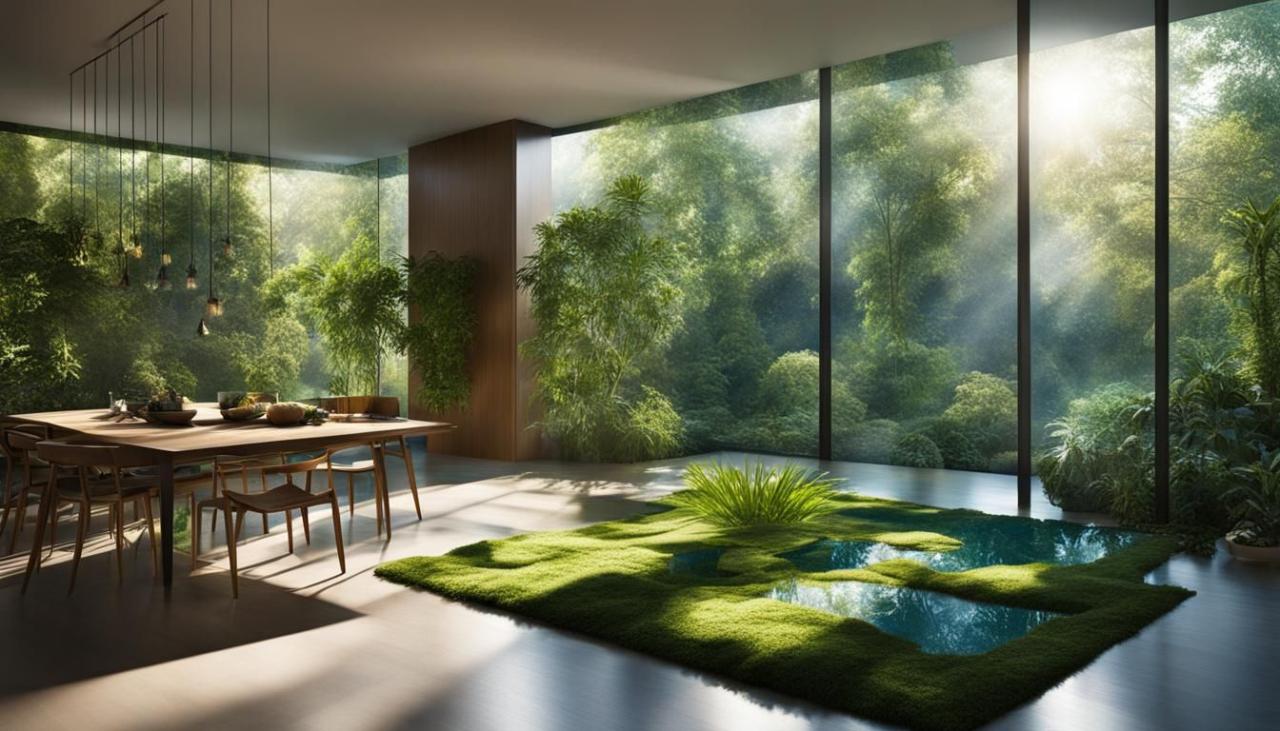
Different contexts demand unique biophilic strategies, tailored to user needs and spatial constraints.
A. Residential Interiors: Incorporate sunrooms, indoor courtyards, green balconies, and plant niches. In kitchens, include herb gardens on windowsills; in bedrooms, use plant-hung canopies for privacy and aroma.
B. Corporate Workplaces: Design open-plan offices with biophilic partitions—living plant screens, wood partition walls with embedded seed pods. Create breakout atriums with skylights and fern groves for impromptu meetings.
C. Educational Facilities: Build outdoor classrooms shaded by canopy gardens; utilize nature-themed murals in corridors; provide educational planters where students cultivate small crops.
D. Healthcare Settings: Integrate hydrotherapy features in therapy rooms, dedicate light-filled corridors with green bench seating, and ensure all patient rooms have garden views or indoor plant vignettes.
E. Hospitality and Retail: Develop biophilic lobbies with grand indoor trees; use water courtyards as focal points; outfit guest rooms with air-purifying potted greenery and natural aroma diffusers.
These applications demonstrate biophilic design’s adaptability across scales and purposes.
Quantifying Biophilic Impact
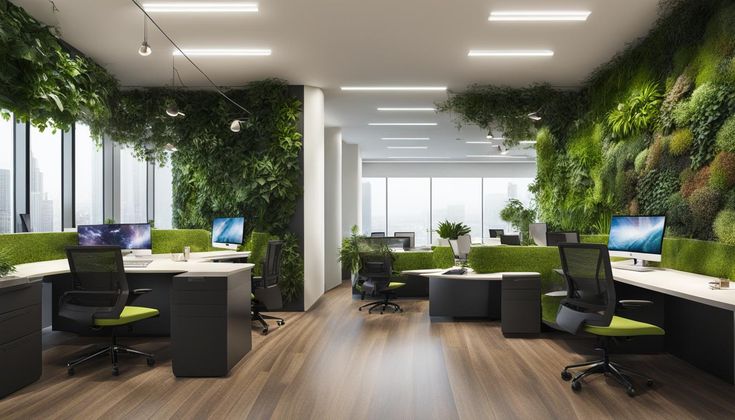
Data-driven evidence validates biophilia’s return on investment and guides iterative design.
A. Occupant Health Metrics: Conduct biometric monitoring—heart rate variability, cortisol sampling, and self-reported wellness surveys.
B. Performance Indicators: Compare productivity KPIs, absenteeism rates, and customer dwell times before and after implementation.
C. Environmental Analytics: Monitor energy savings from natural ventilation, daylight harvesting, and thermal comfort improvements.
D. Post-Occupancy Evaluation: Use surveys and sensor data to assess occupant comfort, space utilization, and maintenance efficiency.
Quantitative analysis empowers stakeholders to make informed design decisions and secure support for future biophilic initiatives.
Overcoming Implementation Challenges
While beneficial, biophilic design can encounter hurdles that require proactive solutions.
A. Budgetary Constraints: Adopt a phased approach—start with cost-effective representational elements (green-inspired finishes, daylighting) before advancing to living systems.
B. Maintenance Complexity: Select hardy plant species, automate irrigation schedules, and train in-house staff or hire horticultural services for ongoing care.
C. Spatial Limitations: In dense urban cores, use vertical planters, green ceilings, and compact hydroponic systems in lieu of ground-level planting.
D. Climate Barriers: Deploy climate-controlled atriums, install plant-friendly grow lights, and choose adaptive species suited to indoor conditions.
E. Cross-Disciplinary Coordination: Establish integrated project teams that include designers, engineers, ecologists, and operators from project inception.
With thoughtful planning and collaboration, these challenges become manageable and lead to resilient biophilic outcomes.
Emerging Trends and Future Directions
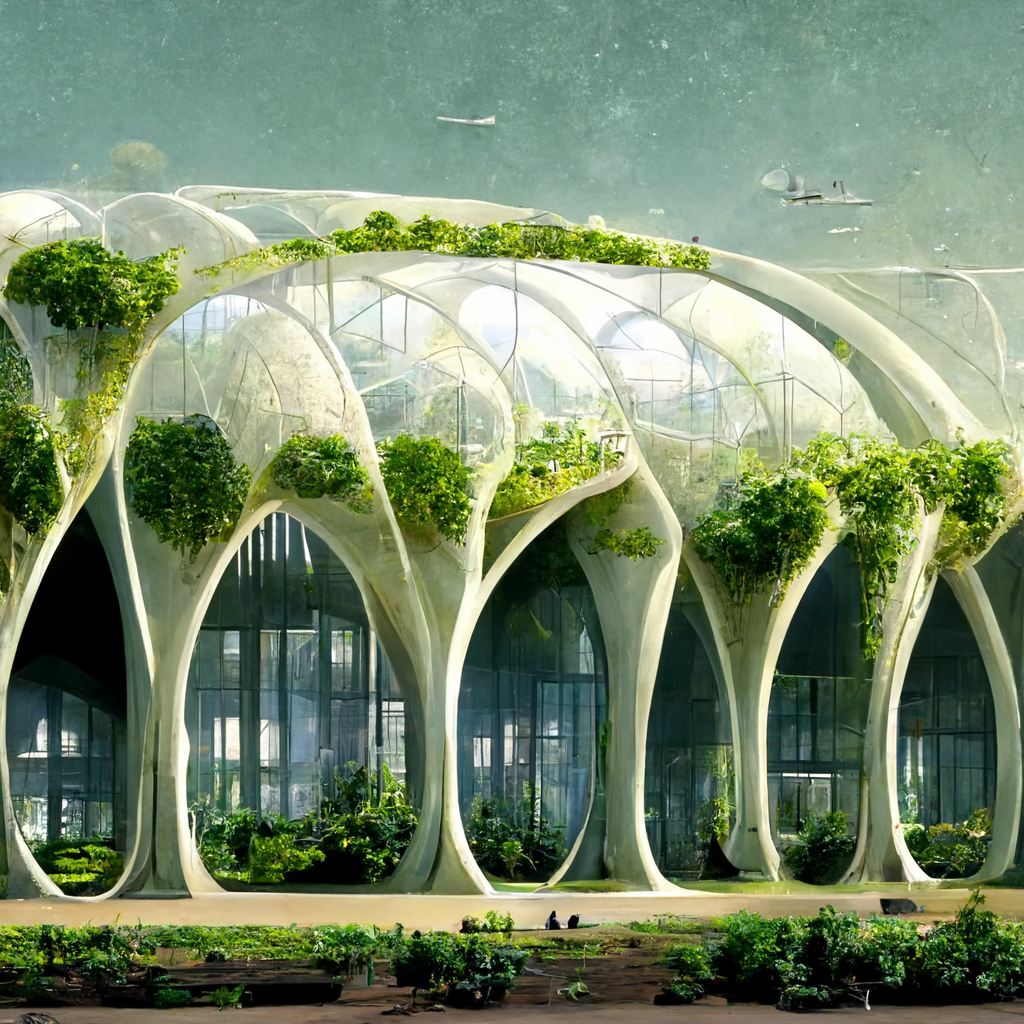
Biophilic design is poised to evolve, leveraging technological advances and ecological imperatives.
A. Smart Biophilia: IoT-enabled sensors regulating irrigation, lighting, and ventilation based on plant and occupant needs.
B. Responsive Building Envelopes: Facades that adapt to sunlight, temperature, and occupancy—using living materials and kinetic shading.
C. Augmented Nature Interfaces: AR applications projecting dynamic, interactive nature scenes in windowless interiors, blending real and virtual biophilia.
D. Regenerative Urban Networks: Linking green roofs, park connectors, and corridor plantings to nurture biodiversity and urban climate resilience.
E. Biophilic Certification Standards: Development of rating systems (beyond WELL and LEED) that specifically measure depth and quality of nature integration.
These innovations will deepen humanity’s reconnection with natural systems and inform next-generation design practices.
Conclusion
Biophilic design transcends aesthetic trends—it’s a holistic movement that fosters health, productivity, and environmental harmony. By marrying direct encounters with nature, indirect organic references, and spatial strategies inspired by landscapes, we create interiors that resonate with human psychology and planetary needs. As urbanization accelerates, embracing biophilia offers a path to regenerative spaces where people thrive and ecosystems flourish. Designers, developers, and occupants alike stand to benefit from weaving nature’s blueprint into the very fabric of our built environment.

